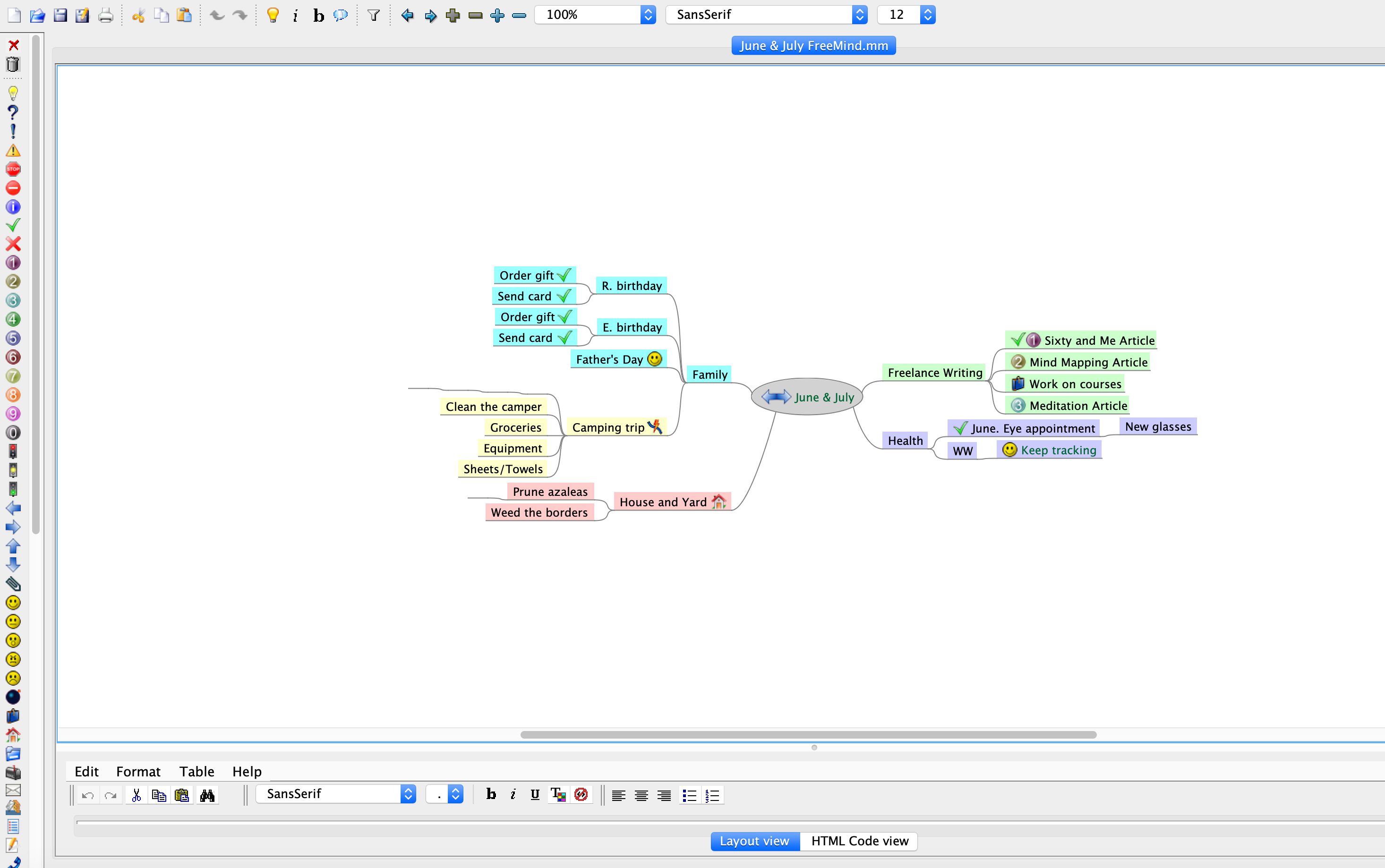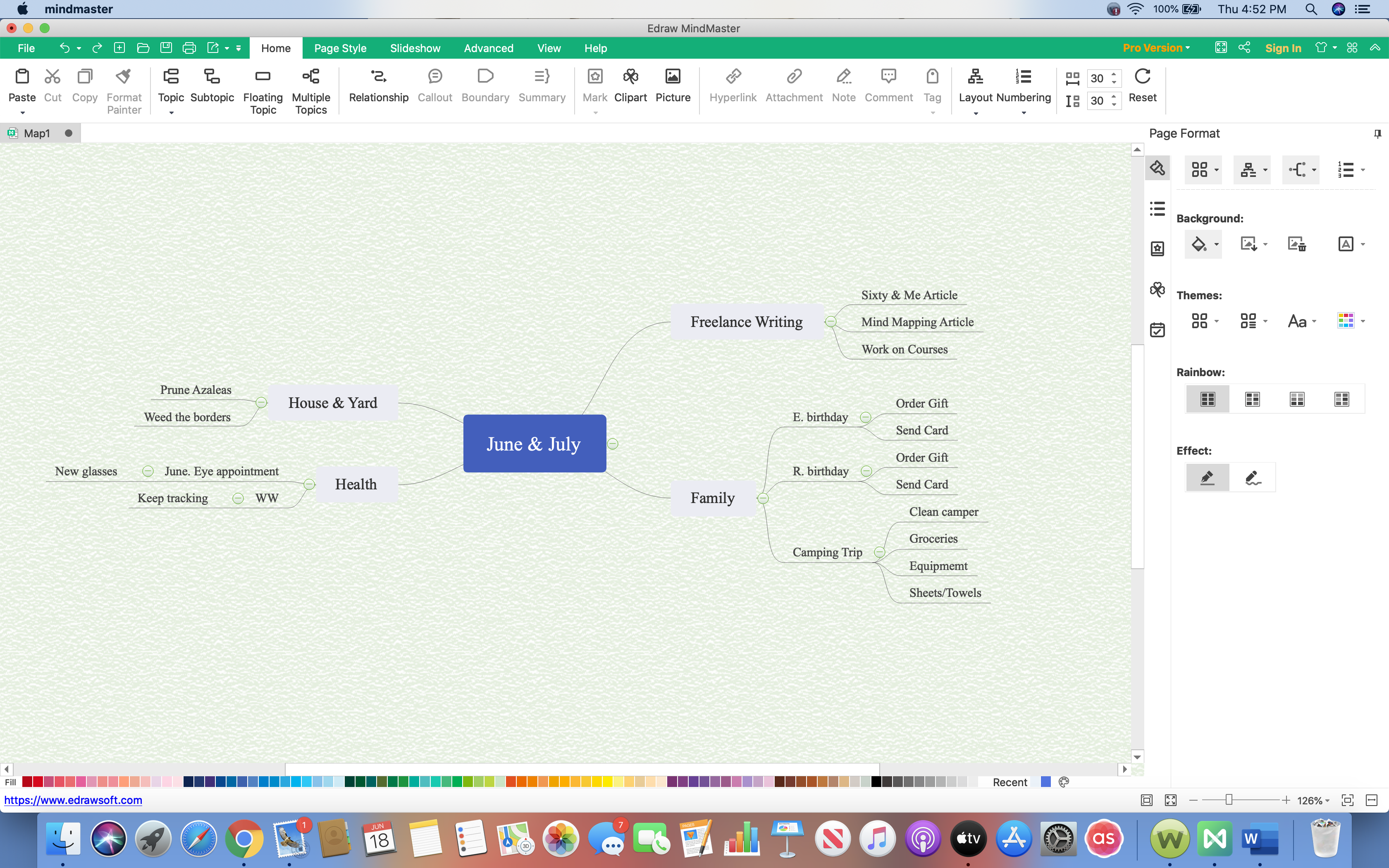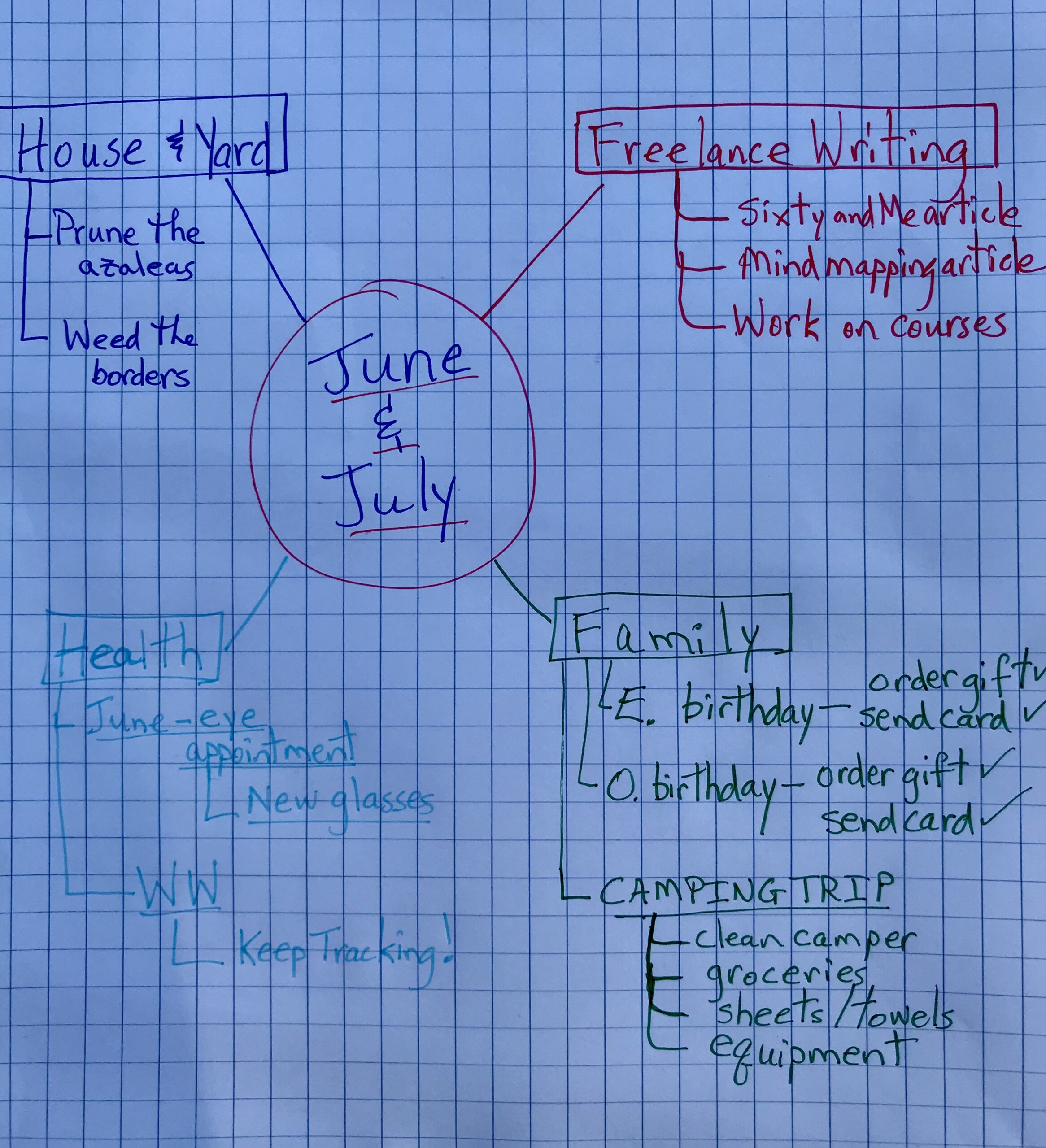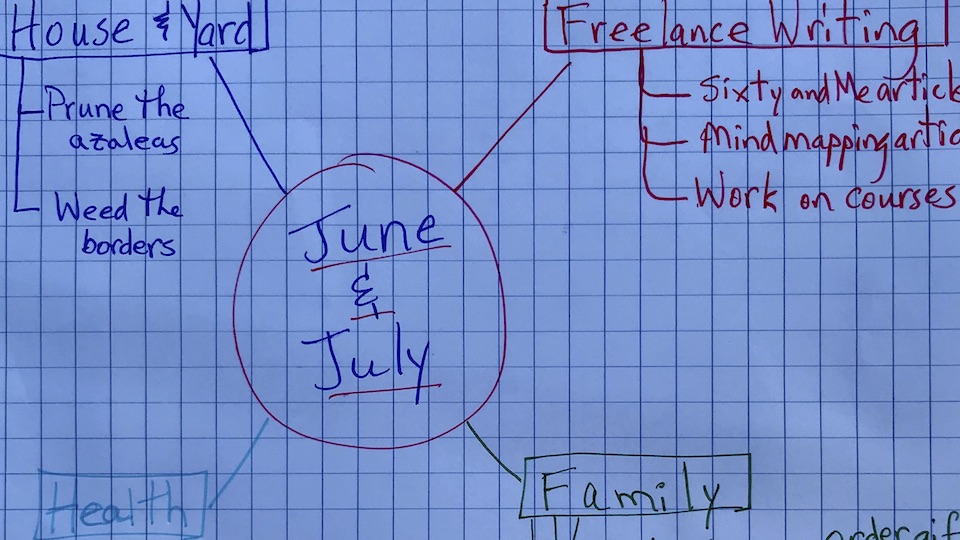We all need to declutter our brains from time to time — maybe now more than ever. In stressful times that include a global pandemic as well as social upheaval of historic proportions, we have an abundance of incoming information that calls forth emotional responses.
If you’re seeking balance and clarity, you might want to try mind mapping to declutter your brain. The act of creating a mind map can help you organize your thoughts and give you, well . . . a map to determine direction, gain control and take action. When you’re feeling mentally and emotionally overloaded, mind mapping helps you cut through the clutter.
What is Mind Mapping?
The term mind mapping was first popularized in the 1970s by British psychologist Tony Buzan. A mind map is a radial chart that shows main ideas with sub-topics branching off from them. When more ideas are associated and categorized, the mind map takes on the shape of a tree.
As you work to get your thoughts down on paper (or on a screen) in the form of a mind map, your emerging tree shows the relationships of your thoughts to each other. In this way, the mind map becomes much more informative than a simple list could be. The mind map represents a hierarchy of connected ideas.
When you engage in mind mapping, you create a visual representation of all those thoughts swirling around in your head. Starting with one central idea or image in the middle of the page, you then make note of related ideas and draw lines to show their connection back to the main idea. These lines resemble branches emerging from the central trunk of a tree. From each sub-topic, you create smaller “twigs” that connect even more ideas back to the “branches.”
How Does Mind Mapping Affect Your Brain?
In the 1950s and ‘60s, Dr. Roger Sperry’s ground-breaking research into the left and right hemispheres of the cerebral cortex changed how we think about our brains. In general, Sperry found that left-brain thinking tends toward analysis and method while right-brain thinking is employed for artistic and creative endeavors.
The truth is that we use both left and right hemispheres of our brains. Sperry confirmed that when the two hemispheres work together, brain performance is enhanced.
Herein lies the magic of mind mapping. As we make a visual representation of our thoughts, we use a full range of thinking skills. While we list, categorize and arrange topics and sub-topics in a mind map, we’re creating a picture of what’s going on in our minds. The process involves both our analytical left-brain hemisphere and our artistic right-brain hemisphere.
High-Tech or Low-Tech Mind Maps? It’s Your Choice
In the early years, mind mapping was primarily used in educational settings. Students drew mind maps with pencil and paper to assist with studying, note-taking, and other learning tasks. Hand-drawn mind maps are still quite popular, and many people feel more connected to the process when they put pencil/pen to paper.
On the other hand, you might want to go high-tech with your mind mapping. A brief internet search reveals a wide range of choices for mind-mapping apps. I downloaded two of them, and I got only the most basic, free versions of apps that did not require me to sign up for an account.
Using the two apps, I created a brief To-Do list for June and July. I only used the limited features available in free versions of the apps, and I only spent a few minutes exploring the capabilities of each app. I’m sure there’s much more that you can do with both apps, given more time and practice.

The mind map above is drawn with the free version of FreeMind. I liked how easy it was to color-code the different categories of my to-do list. This app also features a ton of emojis and icons that you can easily insert to dress up your map. I liked being able to add the little green checkmarks for tasks that I’ve completed.

Above, you can see a mind map of the same to-do list created on MindMaster from Edraw. Here, you have a range of wallpaper choices to give color and texture to your background. Additionally, you can easily change the structure of your map. For example, you can make the main topic align to the left so that all of the radial branches read from left to right.

Finally, here’s a photo of the pen-and-paper version of the same to-do list. Artistic people embellish their mind maps with little illustrations and cool shapes. As you can see, I have no artistic ability whatsoever, but I do like color pens!
Your Turn
Give mind mapping a try. You might discover an ability to capture and organize your thoughts in a way that yields a renewed sense of calm and control.
Your brain will thank you.
-Carol Benton
Image: Mind-map image courtesy of the author



0 comments on “Mind-Mapping: A Fun Way to Declutter Your Brain”